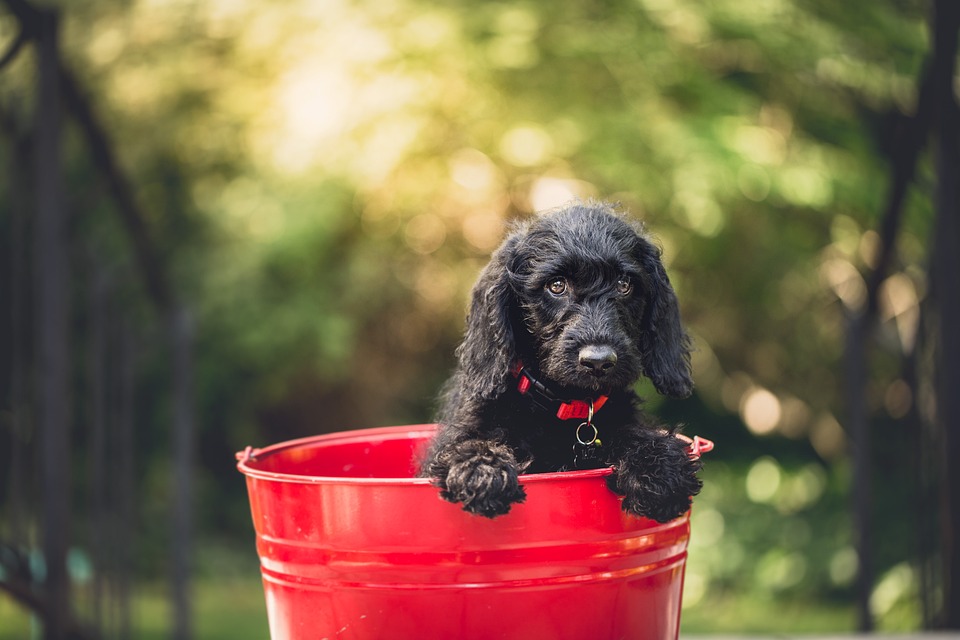 |
| 10 Tips for the First 30 Days After Adopting a Dog |
Bringing home a new dog is an exciting and rewarding experience. However, the first 30 days after adopting a dog can be a crucial time for both you and your new pet. It's important to establish a routine, build a bond, and ensure a smooth transition for your furry friend. Here are 10 tips to help you navigate the first month after adopting a dog.
Tip 1: Create a Safe and Comfortable Environment
When bringing a new dog home, it's important to create a safe and comfortable environment for them. This includes setting up a designated sleeping area, providing a cozy bed, and ensuring there are no hazards or harmful objects within their reach.
Tip 2: Establish a Routine
Dogs thrive on routine, so it's important to establish a consistent schedule for feeding, walking, and playtime. This will help your new dog adjust to their new home and feel more secure in their surroundings.
Tip 3: Socialize Your Dog
Socializing your dog is crucial for their development and well-being. Introduce them to other pets, people, and different environments to help build their confidence and prevent future behavior problems.
Tip 4: Provide Mental and Physical Stimulation
Dogs need both mental and physical stimulation to stay happy and healthy. Incorporate interactive toys, puzzle games, and regular exercise into your new dog's daily routine to keep them engaged and entertained.
YOU MAY LIKE Adopting A Puppy:
Are You Thinking Of Fostering or Adopting A Puppy?Adopting A dog
Adopting a Dog or Puppy
Comprehensive Guide to Adopting a Dog or Puppy
Should You Adopt a Puppy Adult or Senior Dog?
How to adopt or rehome a dog
The Ultimate Guide on Adopting or Rehoming a Dog
10 things to consider before adopting a dog puppy
11 reasons why you should adopt!
20 Compelling Reasons to Embrace Adoption Today!
Tip 5: Patience and Consistency
Adjusting to a new home can be overwhelming for dogs, so it's important to have patience and be consistent in your training and caregiving. Positive reinforcement, clear expectations, and a calm demeanor will help your new dog feel secure and build trust with you.
Tip 6: Basic Training and Obedience
Enroll your new dog in basic training classes or work on obedience training at home. This will help establish boundaries, build communication, and strengthen your bond with your pet.
Tip 7: Veterinary Care and Nutrition
Schedule a visit to the veterinarian for a thorough check-up and ensure your new dog is up to date on vaccinations and preventive care. Additionally, provide a balanced diet and appropriate nutrition for your dog's specific needs.
Tip 8: Grooming and Hygiene
Regular grooming and hygiene practices are essential for your dog's well-being. This includes brushing their coat, trimming their nails, and maintaining dental health to prevent any discomfort or health issues.
Tip 9: Provide Love and Affection
Show your new dog love and affection to help them feel secure and build a strong bond with you. Spend quality time together, offer praise, and create positive experiences to create a trusting relationship.
Tip 10: Be Prepared for Challenges
Adjusting to a new home comes with its challenges. Be prepared for setbacks, behavioral issues, and unexpected situations. Seek professional guidance if needed and remain patient and committed through the initial adjustment period.
Conclusion
The first 30 days after adopting a dog are crucial for setting a foundation for a happy and healthy life together. By creating a safe environment, establishing a routine, providing socialization and stimulation, and being patient and consistent, you can ensure a smooth transition for your new furry friend.
FAQs
Q: How long does it take for a dog to adjust to a new home?
A: Every dog is different, but it can take anywhere from a few days to a few months for a dog to fully adjust to their new home. Patience and consistency are key during this period.
Q: Should I crate train my new dog?
A: Crate training can be beneficial for providing a safe and secure space for your dog, as well as aiding in house training. It's important to introduce the crate in a positive and gradual manner.
Q: What should I do if my new dog exhibits signs of anxiety or fear?
A: If your new dog is displaying signs of anxiety or fear, it's important to create a calm and comforting environment for them. Consult with a professional trainer or behaviorist for guidance on how to help your dog overcome their fears.
YOU MAY LIKE:
The 10 Most Playful Dog BreedsThe 10 Most Popular Herding Dog Breeds
The 10 Most Popular Hound Dog Breeds
The 10 Most Popular Non-Sporting Dog Breeds
The 10 Most Popular Sporting Dog Breeds
The 10 Most Popular Terrier Dog Breeds
The 10 Most Popular Toy Dog Breeds


